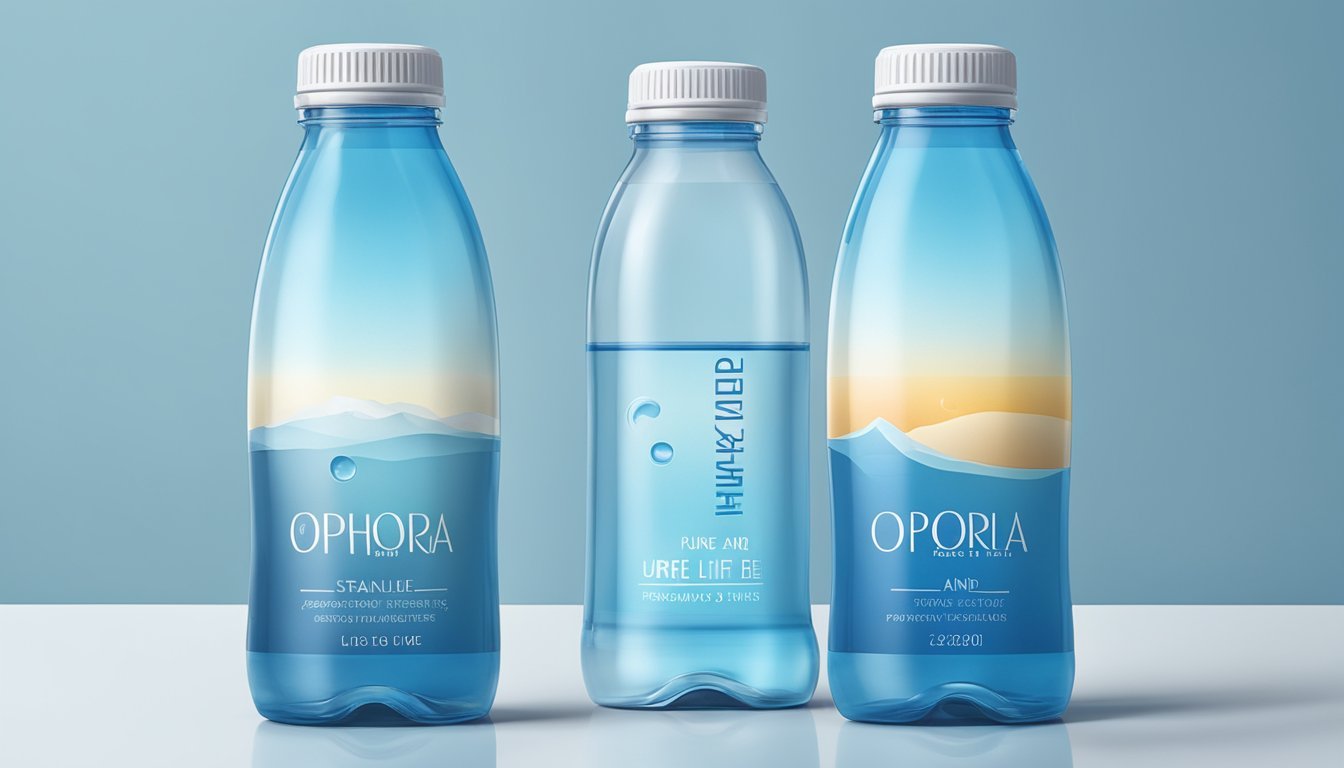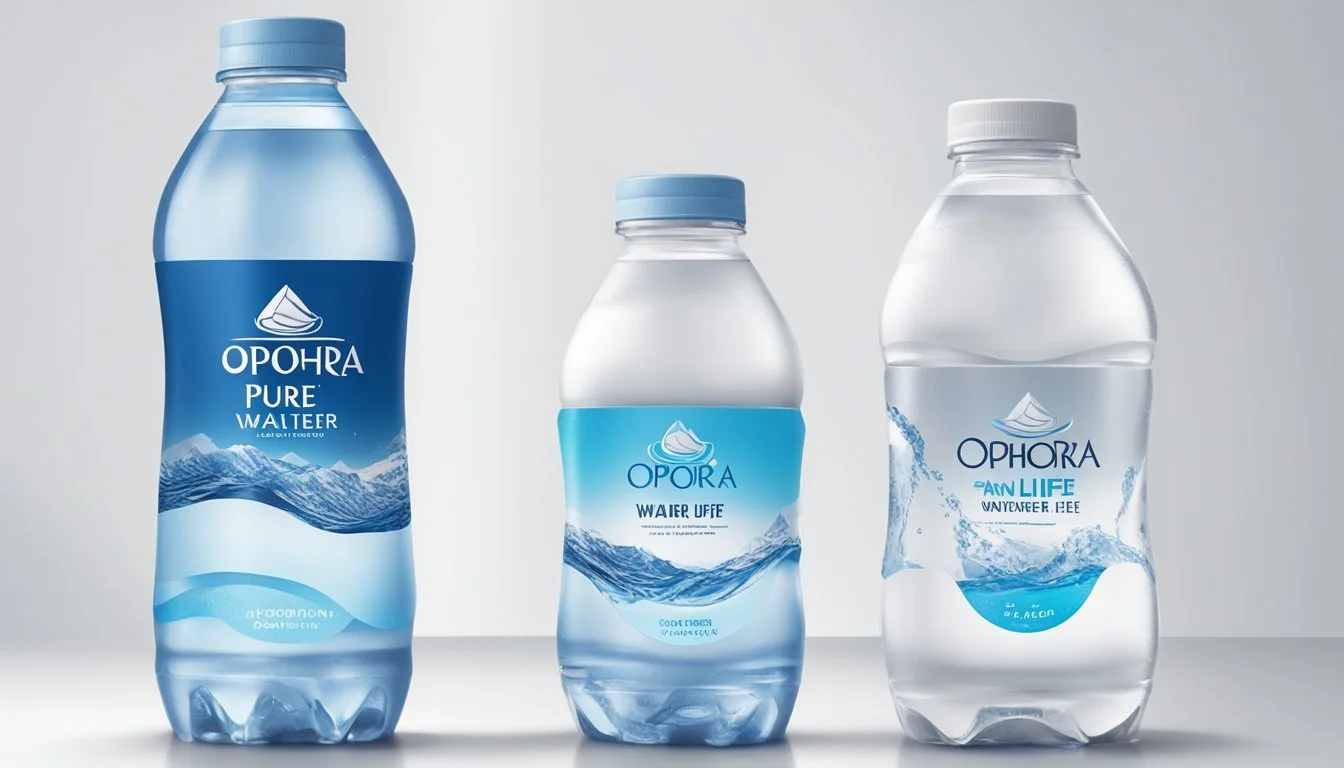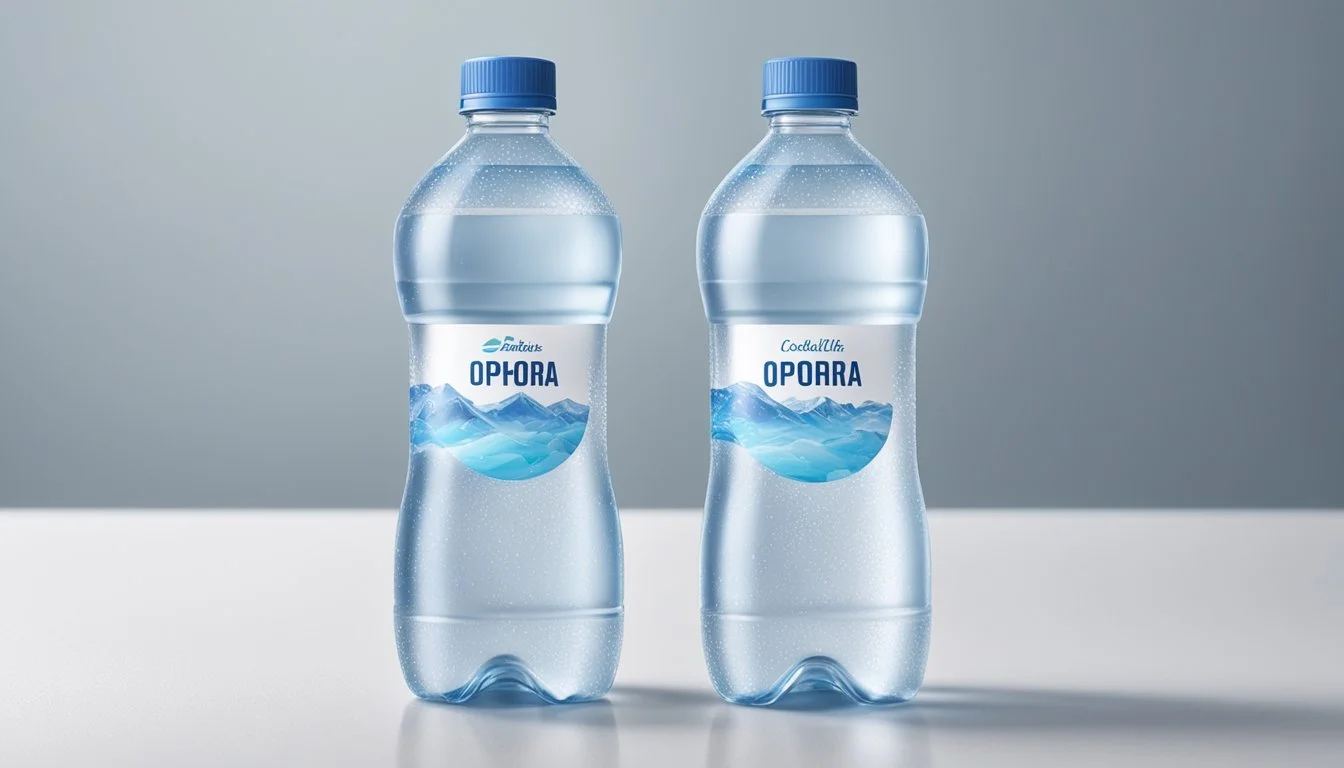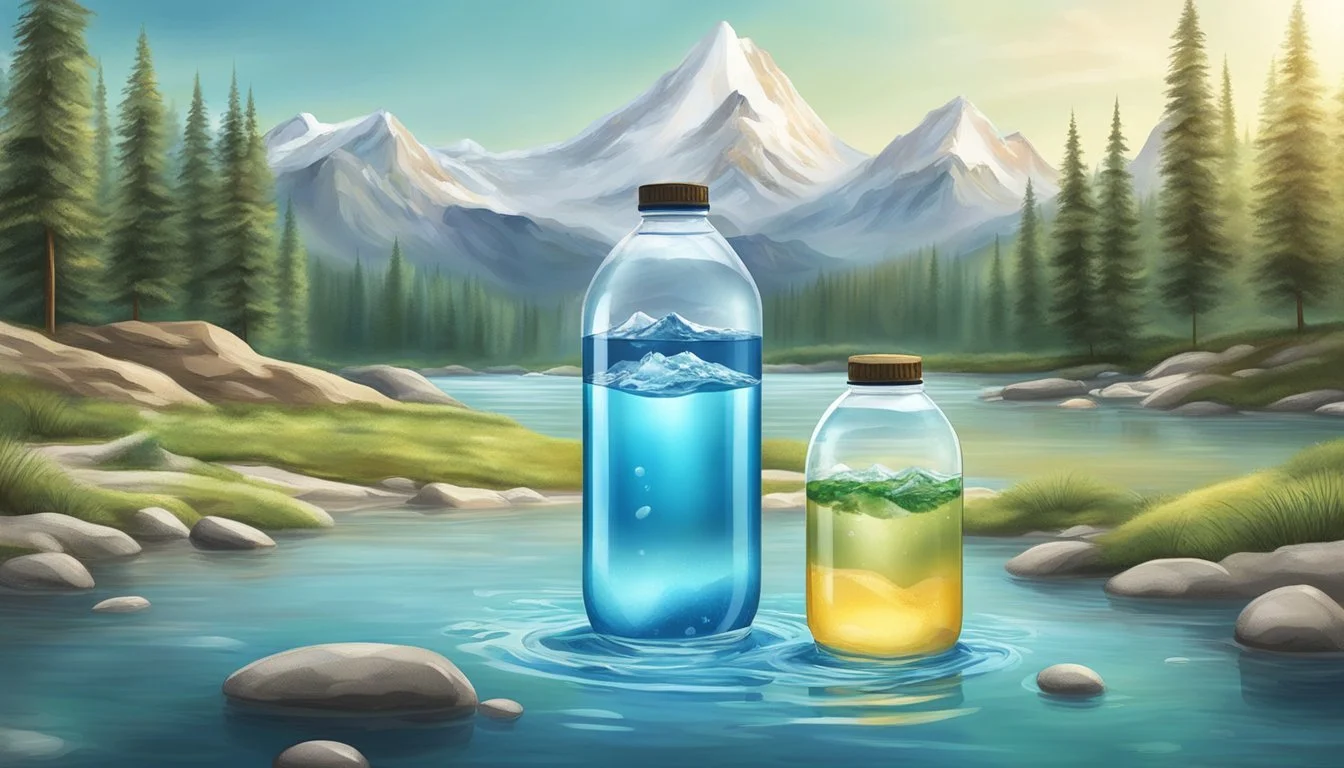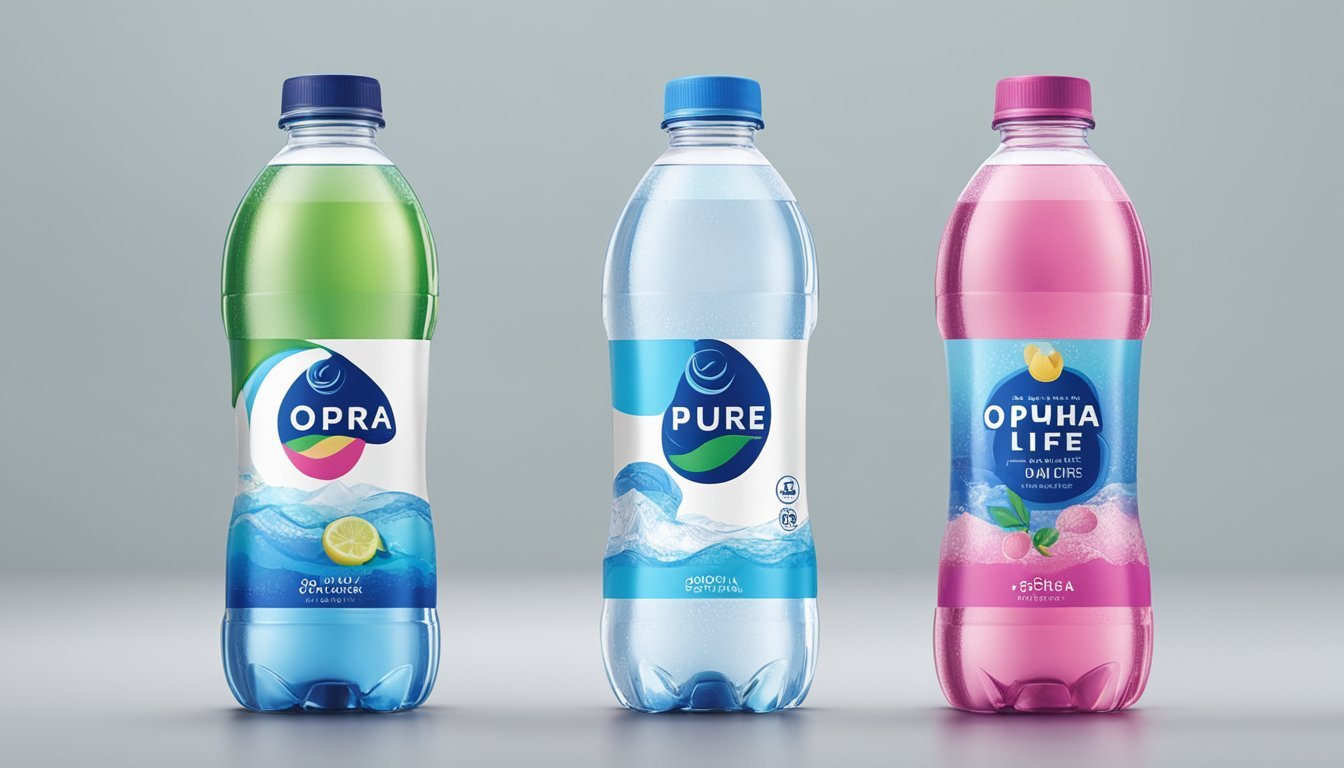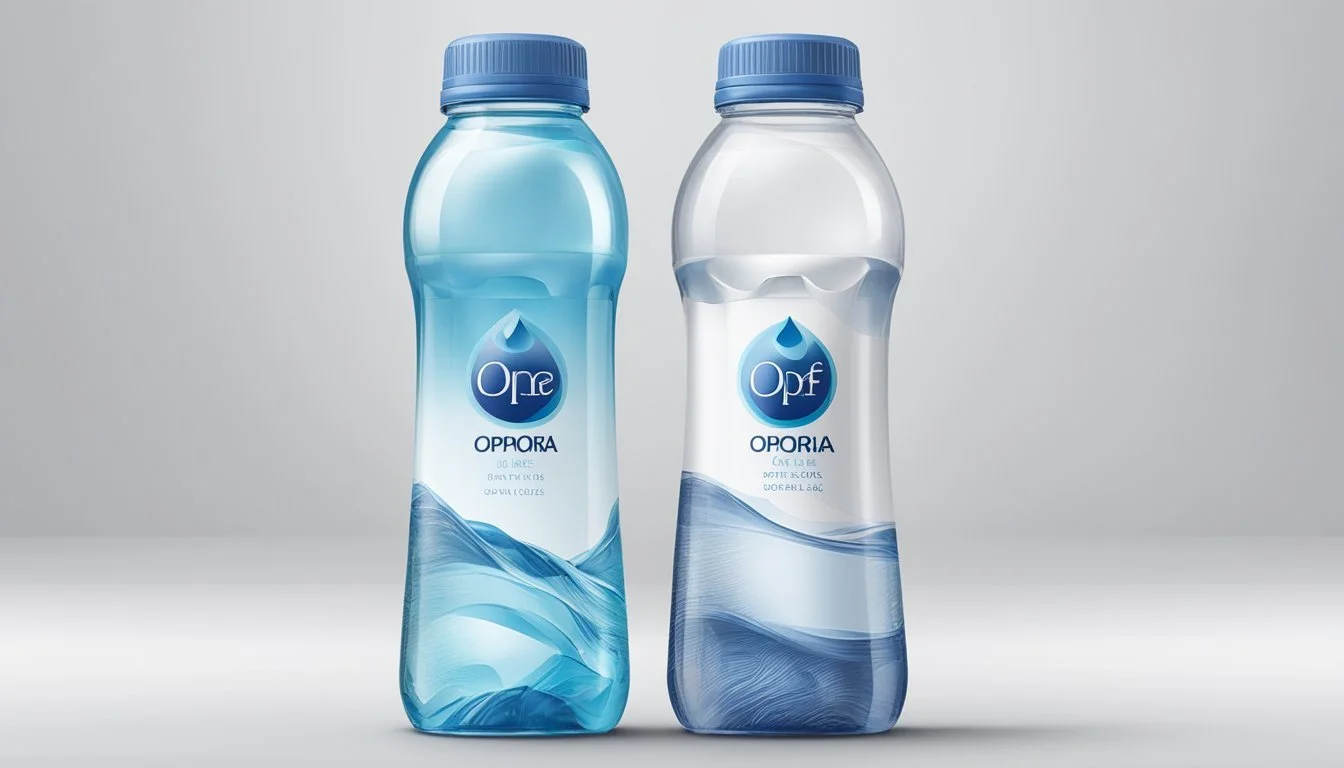Ophora vs. Pure Life
Comparing Quality and Value
Bottled water choices can be overwhelming, but today, we're comparing Ophora and Pure Life to help you make an informed decision. Ophora, known for its purity and oxygen-rich properties, offers a premium experience that stands out in the crowded market of bottled water options. Its commitment to quality and health benefits has gained a dedicated consumer base.
Pure Life, on the other hand, is one of the most recognized brands in the world, backed by the giant Nestlé corporation. Despite its widespread availability and cost-effectiveness, some critiques point out it's less impressive in terms of source and taste. This raises the question of whether its convenience can truly compete with the high standard set by Ophora.
This blog post delves into comparing these two brands, examining factors such as purity, taste, price, and overall consumer satisfaction. Whether you prioritize health benefits or affordability, this detailed comparison aims to guide you in choosing the best bottled water for your needs.
Understanding Bottled Water
Bottled water comes in various forms, each with distinct characteristics and benefits. These differences can influence consumer choice based on factors such as taste, origin, and purification processes.
Defining Bottled Water
Bottled water is water packaged in plastic or glass for consumption. It includes several categories such as spring water, purified water, and mineral water. Spring water is collected from an underground source and typically bottled at the source. Purified water, often derived from tap water, undergoes processes like distillation, deionization, or reverse osmosis to remove impurities. Mineral water contains minerals naturally present in the water or added during bottling.
Taste, safety, and convenience often drive bottled water consumption. Tap water, while generally safe and regulated, may not meet everyone's taste preferences or safety standards in certain regions. This drives the popularity of bottled options, providing a perceived higher-quality alternative.
Categories of Bottled Water
Bottled waters are categorized mainly into spring, purified, and mineral types. Spring water must come from a natural spring and retain the composition of minerals found at the source. Well-known brands include Poland Spring and Evian.
Purified water starts as either groundwater or tap water but undergoes purification processes to remove chemicals and pathogens. Brands like Nestlé Pure Life offer purified bottled water.
Mineral water contains naturally occurring or added minerals like calcium and magnesium. It’s often sourced from mineral springs and is known for its unique taste and health benefits. Brands such as Perrier and San Pellegrino fall under this category.
Each type offers unique features catering to different preferences, ensuring a broad market appeal.
Health Considerations
When comparing Ophora and Pure Life bottled water brands, it is crucial to consider their impacts on health, including their hydration benefits, potential contaminants, and mineral content. Understanding these factors can greatly influence your choice between the two.
Hydration and Health
Ophora water is known for its super-oxygenated content, which claims to enhance hydration and overall bodily functions. Enhanced hydration is particularly beneficial for athletes and those with active lifestyles.
Pure Life water, sourced and filtered by Nestlé, prioritizes consistency and accessibility. It is widely available and meets the minimum standards set by the EPA for drinking water. Both brands provide adequate hydration, crucial for maintaining bodily functions and overall health.
Contaminants and Safety
Ophora boasts of stringent filtration processes, eliminating contaminants including lead, heavy metals, and PFAS chemicals. This ensures nearly pure water, which can be particularly important for health-conscious consumers.
Pure Life also undergoes extensive filtration, adhering to the EPA's safety standards. Although Pure Life maintains safety standards, it may not match the rigorous processes used by Ophora to remove contaminants. Checking the water quality reports and certifications can provide additional assurance about the safety of both brands.
Minerals and Health Benefits
Ophora includes added electrolytes and essential minerals in its water, contributing to better muscle function, improved hydration, and overall wellness. The presence of electrolytes such as potassium and magnesium enhances its health benefits.
Pure Life offers a purified water product with a neutral taste, focusing less on additional mineral content. While it maintains essential minerals for taste and water stability, it might not provide the same level of health benefits derived from enriched mineral content as Ophora does. Assessing personal health needs can guide the choice based on which mineral profile aligns better with individual health goals.
Brand Profiles
Ophora and Nestlé Pure Life represent two distinct approaches to bottled water, emphasizing different qualities and production processes that cater to specific consumer preferences.
Ophora Water
Ophora Water prides itself on offering highly purified and oxygenated water. Targeting health-conscious consumers, it utilizes a rigorous purification process that removes contaminants and enriches the water with oxygen. This process is achieved through advanced micro-filtration, reverse osmosis, and UV sterilization.
The brand promotes the health benefits of its water, such as improved hydration and enhanced nutrient absorption. Additionally, Ophora's packaging emphasizes its premium nature, often incorporating eco-friendly materials.
Nestlé Pure Life
Nestlé Pure Life, by Nestlé Waters, positions itself as a widely accessible and reliable bottled water option. Sourced from wells and other purified water sources, it undergoes an extensive distillation process to ensure cleanliness and quality.
The brand is renowned for its global distribution and affordability. Nestlé Pure Life is marketed towards the average consumer looking for a convenient hydration option. Despite its extensive reach, it has received mixed reviews regarding its taste, with some consumers noting it as merely adequate.
Sourcing and Origin
Ophora and Pure Life water brands have distinct approaches to sourcing and purification. Understanding these differences can help consumers make informed choices.
Natural Sources
Ophora sources its water from natural springs. These springs are often located in remote, pristine areas ensuring minimal contamination. The water from these sources is typically high in mineral content, which some believe contributes to better taste and health benefits. This emphasis on natural, untouched sources is a key selling point for the brand.
Pure Life, on the other hand, does not rely on natural springs for its water. Instead, it sources water from various locations, including municipalities. This means the origin of Pure Life water can vary, and it doesn't possess the unique mineral content found in natural spring water. The primary goal is to ensure a consistent, purified product rather than a natural, mineral-rich beverage.
Artificial Purification
Ophora utilizes advanced purification processes to maintain the quality and purity of its spring water. This includes microfiltration, reverse osmosis, and ozone treatment. These methods are designed to remove impurities while preserving the natural minerals present in the water. The process is rigorous, ensuring the water remains pure and high-quality without altering its natural properties too much.
Pure Life employs a comprehensive multi-step purification process. Sourcing from various locales means the water undergoes extensive treatment to achieve consistency. Processes include reverse osmosis, carbon filtration, and UV treatment. This approach removes virtually all impurities, including minerals, resulting in water that tastes clean but lacks the unique profile of natural spring water.
Taste and Palate
Understanding the taste and palate of bottled water will help consumers make an informed choice. This section examines the taste profiles and expert opinions on both Ophora and Pure Life.
Water Taste Profiles
Ophora boasts a clean and crisp taste often attributed to its advanced filtration process, which removes impurities while enhancing oxygen levels. This results in a refreshing experience that some describe as silky and smooth. The absence of chlorine and fluoride gives it a pure flavor.
Pure Life by Nestlé offers a more neutral taste. It’s known for a slight tang that might be noticeable to sensitive palates. The water undergoes a purification process, including reverse osmosis and adding minerals for taste, which could account for its distinct profile.
Expert Opinions
Water sommeliers often praise Ophora for its exceptional purity and balanced mineral content. They highlight its enhanced oxygenation, which contributes to the unique taste experience. This brand is frequently recommended for those seeking a high-quality, refreshing drink.
Pure Life receives mixed reviews. Critics appreciate its reliability and wide availability but note that its flavor can seem flat compared to premium brands. Experts suggest that while it’s a good basic option, it may not satisfy those with sophisticated palates seeking a more distinctive taste.
Filtration and Purity
Understanding how water is filtered and purified is essential when comparing bottled water brands like Ophora and Pure Life. This section addresses the filtration techniques, the role of reverse osmosis, and how the levels of purity impact the final product.
Filtration Techniques
Ophora utilizes advanced filtration processes to ensure the highest quality. Their Hydro-7™ process includes multiple stages, such as carbon filtering and UV treatment, which aim to remove contaminants and impurities.
Pure Life, on the other hand, often employs basic filtration methods like carbon filtering. This helps reduce chlorine and other chemicals but might not be as comprehensive as Ophora's method.
Comparing both, Ophora's Hydro-7™ system stands out due to its thorough multi-step process. This ensures a cleaner and safer drinking experience.
Reverse Osmosis
Reverse osmosis (RO) is a crucial method in removing dissolved salts, bacteria, and other microscopic impurities. Ophora integrates RO in its Hydro-7™ process, significantly enhancing purification.
Pure Life uses reverse osmosis in some of its products, but not across the board. This difference can be significant in terms of the purity levels each brand achieves.
Reverse osmosis by Ophora ensures that almost all contaminants are removed. This makes it a superior choice for those prioritizing water purity.
Levels of Purity
When it comes to purity levels, Ophora boasts near-zero contaminants due to its rigorous Hydro-7™ process. The water is not only purified but also re-mineralized to enhance taste and health benefits.
Pure Life, while still providing clean and safe water, may leave trace contaminants depending on the source and filtration method used. This can vary by region and batch.
Ophora's extra steps in purification result in a higher degree of purity, making it preferable for consumers seeking premium quality water. Their focus on removing impurities and reintroducing essential minerals places them ahead of Pure Life in this category.
Regulatory Standards
Bottled water, including both Ophora and Nestlé Pure Life, must comply with strict regulatory standards to ensure safety and quality. Key aspects of these regulations include oversight by the FDA and adherence to international guidelines.
FDA Oversight
The Food and Drug Administration (FDA) oversees bottled water in the United States. It ensures products meet stringent safety standards similar to those set by the Environmental Protection Agency (EPA) for tap water.
The FDA requires bottled water to be filtered, sterilized, and tested for contaminants such as bacteria, chemicals, and physical impurities. Manufacturers must follow practices outlined in the Current Good Manufacturing Practices (CGMP), which cover facilities, processing, and packaging. Bottled water is also subject to regular inspections and testing to maintain compliance.
Brands like Ophora and Pure Life must submit to these rigorous standards, ensuring consistency and safety across all products sold in the market.
International Guidelines
Internationally, bottled water must meet guidelines set by organizations like the World Health Organization (WHO) and the Codex Alimentarius Commission. These guidelines cover purity, mineral content, and labeling requirements.
For countries in the European Union, the European Food Safety Authority (EFSA) plays a critical role in setting and enforcing standards. The guidelines ensure that water meets health criteria, is free from harmful contaminants, and is properly labeled with nutritional information.
Ophora and Pure Life, if sold internationally, must ensure compliance with local regulations and guidelines, which may vary significantly from those in the United States. This compliance showcases their commitment to maintaining high quality and safety standards globally.
Consumer Convenience
Consumer convenience is critical when evaluating bottled water brands. Important factors include the availability in stores and the overall affordability for the average consumer.
Availability
Pure Life is widely available and can be found in most grocery stores, convenience stores, and even vending machines. Its distribution network is extensive, making it a go-to option for consumers seeking easily accessible bottled water.
Ophora, on the other hand, is usually found in specialty health stores or available for online purchase. It's not as commonly stocked in everyday grocery stores, which can make it less convenient for immediate purchase.
For those prioritizing accessibility, Pure Life has a clear edge due to its widespread distribution.
Affordability
Affordability also plays a significant role in consumer convenience. Pure Life is considered a budget-friendly option, typically priced lower than premium brands. This makes it accessible to a broader range of consumers and ideal for daily use.
Ophora is positioned as a premium bottled water brand, and its price point reflects this. It usually costs significantly more due to its branding and distribution in specialized markets. This higher cost means it may not be a feasible everyday choice for budget-conscious consumers.
In terms of cost, Pure Life tends to be more economical, catering to those who are looking for affordable hydration solutions.
Sustainability and Ethics
Both Ophora and Pure Life have made public commitments to being sustainable and ethically sourced.
Environmental Sustainability
Ophora emphasizes its commitment to biodiversity by adopting eco-friendly practices. The company uses biodegradable packaging materials and supports initiatives aimed at reducing plastic waste. Their production process utilizes renewable energy sources, minimizing the carbon footprint.
Pure Life, a brand under Nestlé, has similarly worked to reduce its environmental impact. The brand has decreased its PET consumption and increased the use of recycled materials in its packaging. Additionally, Nestlé Pure Life promotes recycling initiatives to encourage consumers to recycle bottles responsibly.
Ethical Sourcing
Ophora obtains its water from natural springs, ensuring minimal disruption to the local ecosystem. The brand collaborates closely with local communities to protect water sources and uphold fair labor practices.
Pure Life sources its water from various locations worldwide, emphasizing responsible water management. Their sourcing practices include monitoring water levels and ensuring that local water needs are not compromised. Nestlé has faced criticism in the past but has been taking steps to improve its sourcing transparency.
In summary, both brands focus on environmental sustainability and ethical sourcing but employ different methods and face varying levels of scrutiny regarding their effectiveness and practices.
Comparative Analysis
Comparing Ophora and Pure Life highlights the key differences and similarities in their water quality and their benefits for health and wellness. Specific details can help consumers make informed choices.
Ophora vs. Pure Life Quality
Ophora prides itself on its advanced purification method. Utilizing a proprietary oxygenation process, it claims to increase the oxygen content of its water, promoting better taste and hydration.
Pure Life, from Nestlé, emphasizes a multi-step distillation process to ensure consistent purity. This brand aims to remove impurities through methods like micro-filtration and reverse osmosis, which are standard in the industry.
Key Points:
Ophora: Oxygen-enhanced, premium positioning
Pure Life: Multi-step filtration, widely available
Consumers looking for high-tech purification might lean toward Ophora, while those preferring widely-tested, scaled practices might choose Pure Life.
Best Water for Health and Wellness
Ophora positions itself as a premium health product with increased oxygenation purportedly aiding athletic performance and recovery. Scientific backing for these claims varies, yet anecdotal evidence supports the perceived benefits.
Pure Life, while not marketed specifically for health benefits, ensures a reliable and consistent source of hydration, important for everyday wellness.
Key Points:
Ophora: Targeted at health-conscious consumers
Pure Life: Reliable, safe hydration
The choice between Ophora and Pure Life depends on whether consumers prioritize specialized health claims or reliable daily hydration.
More About Ophora
Mountain Valley Spring Water vs Ophora: Which Bottled Water is Better?
Ophora vs Kirkland Signature: Which Bottled Water is Better?
Richard's Rainwater vs Ophora: Which Bottled Water is Better?
Whole Foods Italian Still Mineral water vs Ophora: Which Bottled Water is Better?
More About Pure Life
Cascade Mountain vs Pure Life: Which Bottled Water is Better?
Hawaii Volcanic vs Pure Life: Which Bottled Water is Better?
Hawaiian Springs vs Pure Life: Which Bottled Water is Better?
Icelandic Glacial vs Pure Life: Which Bottled Water is Better?
Nestle Pure Life vs Pure Life: Which Bottled Water is Better?
Pure Life vs Kirkland Signature: Which Bottled Water is Better?
Pure Life vs Whole Foods 365: Which Bottled Water is Better?
Richard's Rainwater vs Pure Life: Which Bottled Water is Better?
Solan de Cabras vs Pure Life: Which Bottled Water is Better?
Talking Rain AQA vs Pure Life: Which Bottled Water is Better?
Whole Foods Italian Still Mineral water vs Pure Life: Which Bottled Water is Better?

